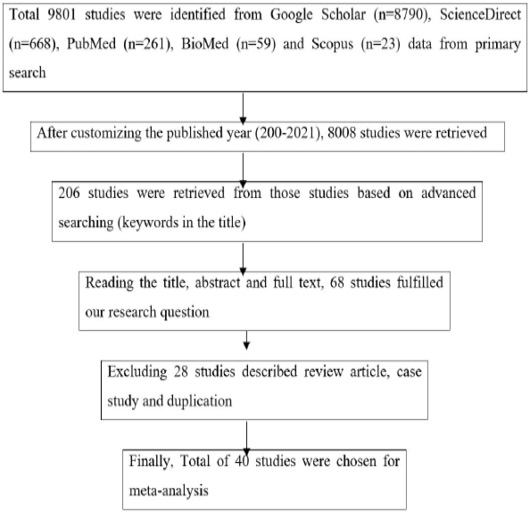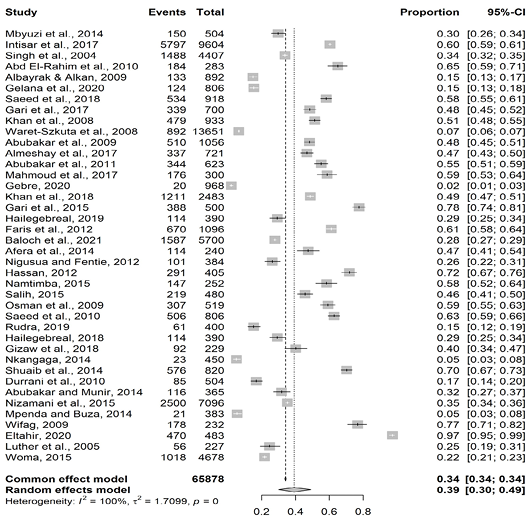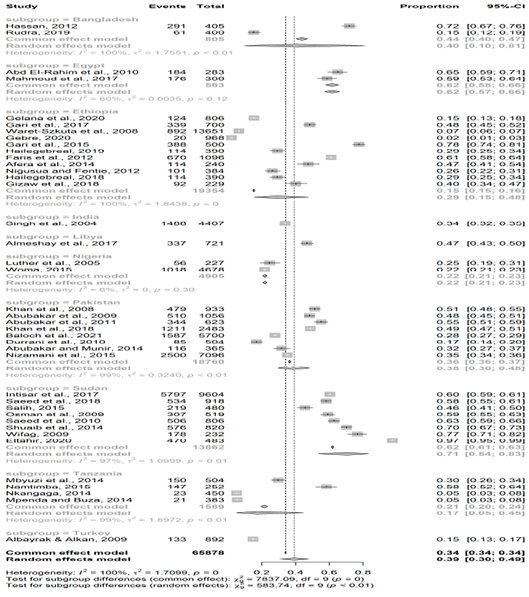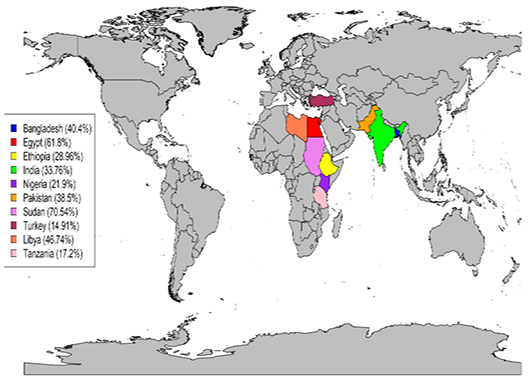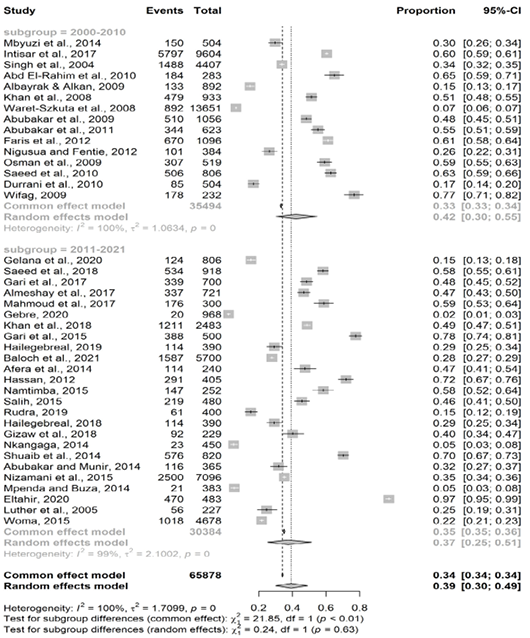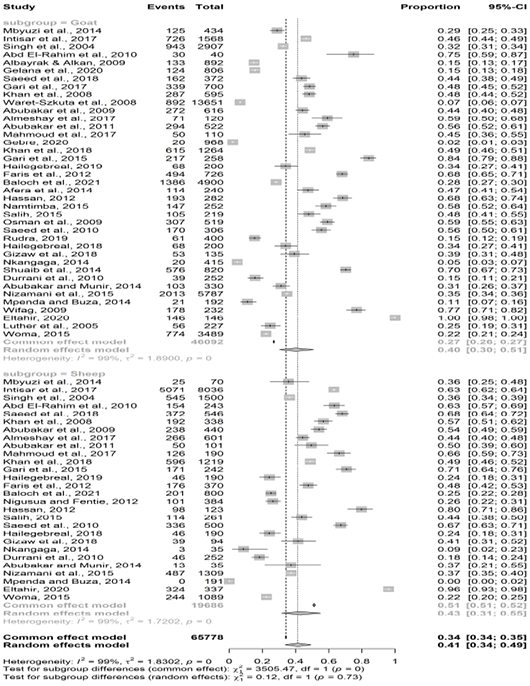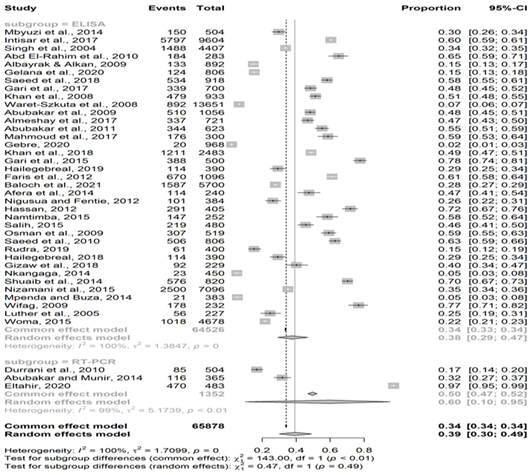Global Prevalence and Associated Risk Factors of Peste des Petits Ruminants (PPR) Virus in Sheep and Goats: A Meta-Analysis
Global Prevalence and Associated Risk Factors of Peste des Petits Ruminants (PPR) Virus in Sheep and Goats: A Meta-Analysis
Apurbo Kumar Mondal1, Md. Rabiul Auwul2, Md. Momotaj Hossen3, Md. Sodrul Islam1*, Narayan Paudyal4, Md. Shahidul Islam1 and Kazi Khalid Ibne Khalil1
The assortment method of entitled studies for calculable scrutiny via flow diagram.
Funnel plot for perceiving the significance of the study publications.
The forest plot demonstrates the prevalence of PPR.
The forest plot demonstrates the prevalence of PPR stratified by country.
The prevalence of PPR according to study location.
The forest plot demonstrates the prevalence of PPR stratified by species.
The forest plot demonstrates the prevalence of PPR according to different diagnostic test methods.




